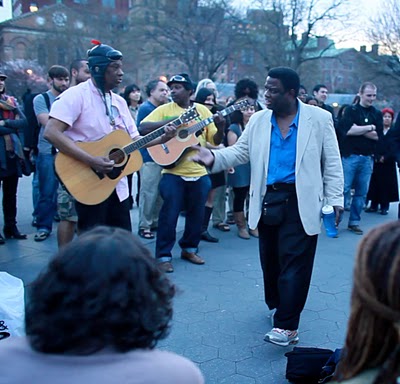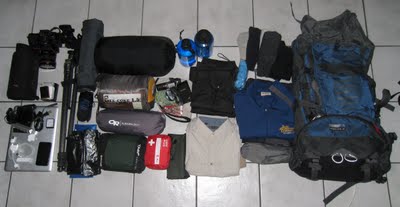Sometimes I start writing something, and then lose interest. Luckily, I never throw anything out, so if for any reason I ever regain interest I just finish it and publish it. That's what just happened for the followup to my article about packing for Olympic National Park, which I give to you now.
As you can probably guess, I ended up making it out of the woods ok, and onto Vancouver where my talk went over very well, at least partly because I gave it in a brand new shirt after taking a couple of extended showers. All the camping and photo gear worked out fine, so there's not that much to say about that, but I did learn a few things along the way.
First, before the actual trip to Olympic, I ended up buying a couple more things in Seattle:
- Lowepro CF card holders. I don't really need those for protection, but they help a lot with keeping cards in sequence and I got really tired of shuffling through all the cards in my pocket looking for the right one. Heartily recommended if you carry more than four cards.
- Canon EF 100/2.8 Macro. I bought this after seeing all the wild flowers in Mount Rainier National Park. It proved really useful for the rest of the trip, but three (big) lenses is definitely my upper limit for backpacking. I'm not sure which of these I'd leave at home if I had to do the same trip again but I doubt I'd be carrying all three.
- Bear can. This is mandatory for wilderness camping in bear country. It adds a little weight and makes packing a bit harder, but all in all it's not too much trouble. Lashed on the bottom of the backpack while hiking it's actually a very convenient place to hold all your food.
- A third water bottle. Always useful.
While I didn't discuss food in the previous article, it has now become obvious that I'm terrible at estimating quantities for backpacking trips. I ended up buying way too much and carrying several totally unnecessary pounds on my back for four days. Definitely something to watch for in the future.
It didn't rain at all, which was pleasantly surprising. So obviously my rain jacket, rain pants, and tarp went entirely unused. If I was to do it again, I'd take only the rain jacket, so if it (unexpectedly) started raining I might be uncomfortable, but not in any danger.
I completely forgot to pack a fire starter (I usually carry a magnesium bar) so I felt very stupid when I pitched my tent right next to a perfect fire circle, surrounded by an ample supply of firewood, with no way to make any kind of flame. I briefly tried setting a few tufts of dry moss on fire by catching the sun with the 100/2.8, and, you know, it might even have worked if I had spent a lot more time at it, or if I hadn't tried it near dusk in the middle of a rather dense forest. Oh well.
Instead of packing DEET, I trusted a rather ambitious sunscreen-cum-bug-repellent thing because it came in a very convenient small tube. This is easily the biggest traveling mistake I ever made… The thing turned out ridiculously useless: I sprayed it right on mosquitoes and they didn't even flinch. I ended the trip with more than a hundred mosquito bites, making the skin over my whole body look like an obstacle course on Mars.
Regarding photography, in four days I took about 26GB of pictures, so my 30GB of CF cards proved just enough. The limiting factor was actually battery life: I ended up with barely 20% remaining in the second battery despite trying really hard to preserve power on the last day. While live view is the best way of ensuring sharp photos, it really eats up batteries like there's no tomorrow. On longer trips I'll obviously have to live without it.
Last but not least: Olympic is beautiful. Go there. Go there now. You'll love it.
 Saturday, August 7, 2010 at 12:09PM
Saturday, August 7, 2010 at 12:09PM  hiking,
hiking,  photography,
photography,  travel
travel 

















